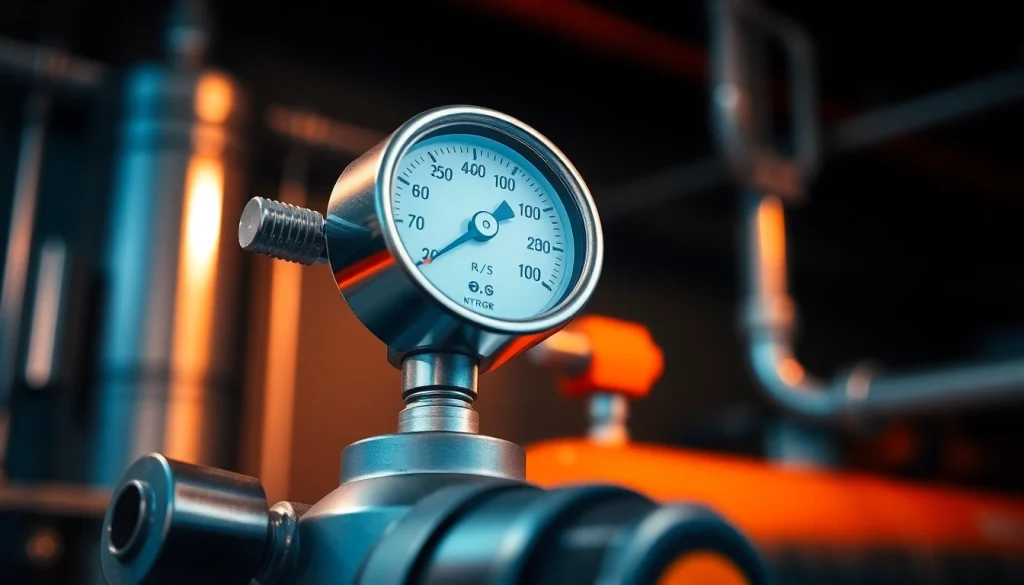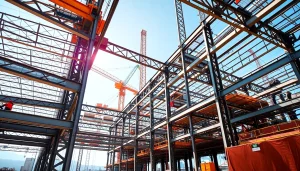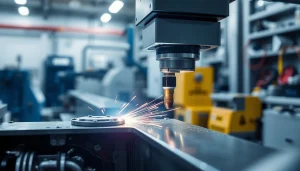Essential Guide to Choosing the Right Nitrogen Regulator for Your Applications

Understanding the Nitrogen Regulator
What is a Nitrogen Regulator?
A nitrogen regulator is a specialized device that manages the pressure of nitrogen gas as it is delivered from a cylinder to various applications. By converting the high-pressure gas from the storage cylinder into a usable low-pressure form, it ensures that the nitrogen is delivered at a consistent and controlled rate. The primary role of a nitrogen regulator is to adjust and stabilize the outlet pressure to meet the specific needs of the application it serves. These regulators are crucial in various industries, including HVAC, refrigeration, food and beverage, and industrial applications.
How Nitrogen Regulators Work
Nitrogen regulators function using a relatively simple mechanical process but are vital for safe and efficient gas handling. The device typically consists of a pressure gauge, an adjustment knob, an inlet connector for the nitrogen cylinder, and an outlet connection for delivery to the application. When nitrogen gas is released from the cylinder, it enters the regulator at high pressure. The regulator then utilizes internal mechanisms to reduce and regulate this pressure to a predetermined level. This can be done manually or automatically, depending on the type of regulator.
Common Uses for Nitrogen Regulators
Nitrogen regulators are employed across diverse sectors. Some common applications include:
- HVAC Systems: Used for pressure testing and purging.
- Refrigeration: Assists in the maintenance and troubleshooting of cooling systems.
- Food and Beverage Industry: Helps in packaging and dispensing nitrogen for freshness.
- Welding and Allied Processes: Regulates the pressure of nitrogen used to shield welds.
- Laboratories: Provides controlled nitrogen atmospheres for experiments and storage.
Types of Nitrogen Regulators
Adjustable vs. Preset Nitrogen Regulators
Nitrogen regulators can be categorized into two primary types based on their functionalities: adjustable and preset regulators.
Adjustable Nitrogen Regulators: These regulators allow users to set the desired outlet pressure manually. They feature an adjustable knob that alters the pressure according to the user’s specific requirements. This flexibility makes them an excellent choice for applications requiring varied pressure settings.
Preset Nitrogen Regulators: As the name suggests, these regulators come calibrated to deliver a fixed pressure without any adjustments. They are ideal for applications where a specific pressure is consistently required, simplifying the operational process and reducing the potential for user error.
Single and Dual Outlet Nitrogen Regulators
Another significant classification of nitrogen regulators is based on their outlet configuration:
Single Outlet Regulators: These have one outlet for the nitrogen delivery, suitable for standard applications where only one pressure is needed.
Dual Outlet Regulators: These regulators feature multiple outlets allowing for simultaneous connections to two different applications. This is especially beneficial in systems requiring simultaneous nitrogen supply at varying pressures.
Best Practices for Selecting a Nitrogen Regulator
Selecting the appropriate nitrogen regulator is crucial for safety and efficiency. Here are some best practices to consider:
- Understand the Application: Determine the specific pressure and flow rate requirements for your application.
- Check Compatibility: Ensure that the regulator is compatible with the nitrogen cylinder and the specific tools or systems it will be serving.
- Review Safety Features: Look for regulators that have built-in safety mechanisms, such as pressure relief valves, to prevent over-pressurization.
- Consider Maintenance Needs: Opt for models that are easy to maintain and service.
Key Features to Look For
Pressure Ranges and Flow Rates
When evaluating nitrogen regulators, pay close attention to their pressure ranges and flow rates. Different applications will necessitate different pressure settings. Common pressure ranges for nitrogen regulators range from as low as 0 PSI to as high as 600 PSI.
Moreover, the flow rate determines how quickly nitrogen can be supplied. For example, a high flow rate is essential in applications such as beer dispensing, where quick delivery is key to maintaining freshness and quality.
Construction and Materials
The construction of the regulator significantly impacts its durability and effectiveness. Look for models made from high-quality materials that resist corrosion and wear, such as brass or stainless steel. Additionally, consider the design of the internal components; a robust construction will not only perform better but will also ensure a longer lifespan.
Safety Features in Nitrogen Regulators
Safety should be a top priority when selecting a nitrogen regulator. Consider looking for the following safety features:
- Pressure Relief Valves: These prevent over-pressurization, which could lead to dangerous failures.
- Built-in Gauges: Allow users to monitor pressure levels and make adjustments as necessary.
- Locking Mechanisms: Help to prevent accidental adjustments to the pressure settings.
- Leak Testing Ports: For easy maintenance and safety inspections.
Installation and Maintenance
Step-by-Step Installation Guide
Proper installation of a nitrogen regulator is essential for optimal performance and safety. Follow these steps for a successful setup:
- Select the Right Location: Ensure the regulator is installed in a well-ventilated area, free of flammable materials.
- Check Cylinder Connection: Ensure that the regulator’s inlet connection is securely attached to the nitrogen cylinder’s valve.
- Adjust the Outlet Pressure: Before opening the cylinder valve, set the desired outlet pressure on the regulator.
- Open the Cylinder Valve: Gradually open the nitrogen cylinder valve, checking for any leaks.
- Monitor Gauges: Observe the pressure gauges for any abnormalities during operation.
Routine Maintenance Tips
Regular maintenance is vital to ensure the reliability and longevity of nitrogen regulators. Here are some key maintenance tips:
- Inspect for Leaks: Regularly check fittings and hoses for signs of gas leaks and replace any worn components.
- Calibrate annually: Ensure that the pressure settings remain accurate by calibrating the regulator at least once a year.
- Keep Clean: Maintain a clean work environment by wiping down the regulator to prevent debris from entering.
- Store Properly: When not in use, store the regulator in a protective case to prevent damage.
Common Issues and Troubleshooting
Like any equipment, nitrogen regulators can encounter issues. Here are some common problems and their solutions:
- Inconsistent Pressure: Adjust the regulator settings or inspect for leaks that may cause pressure drops.
- Gauge Not Reading Correctly: Calibrate the gauge or replace it if it is malfunctioning.
- No Gas Flow: Check the cylinder for adequate nitrogen and ensure all valves are open properly.
Purchasing a Nitrogen Regulator
Where to Buy Nitrogen Regulators Online
Nitrogen regulators can be purchased from various online retailers. Ensure you’re buying from reputable sellers with positive customer reviews. For specific needs, you may want to look at platforms that specialize in gas equipment or industrial supply stores. One such reliable source is nitrogen regulator options that can accommodate various applications and preferences.
Comparing Prices: What to Expect
Prices for nitrogen regulators can vary widely depending on their features, materials, and capabilities. Typically, you can expect to pay anywhere from $20 for basic models to $200 or more for high-end options with advanced functionality. Always compare prices and features across different platforms to ensure you are getting the best value for your money.
Customer Reviews: Key Insights
Before purchasing a nitrogen regulator, it’s beneficial to read customer reviews and ratings. These insights can provide a better understanding of product performance, durability, and customer service experiences. Look for feedback regarding ease of use, reliability, and any challenges users faced with specific models.







